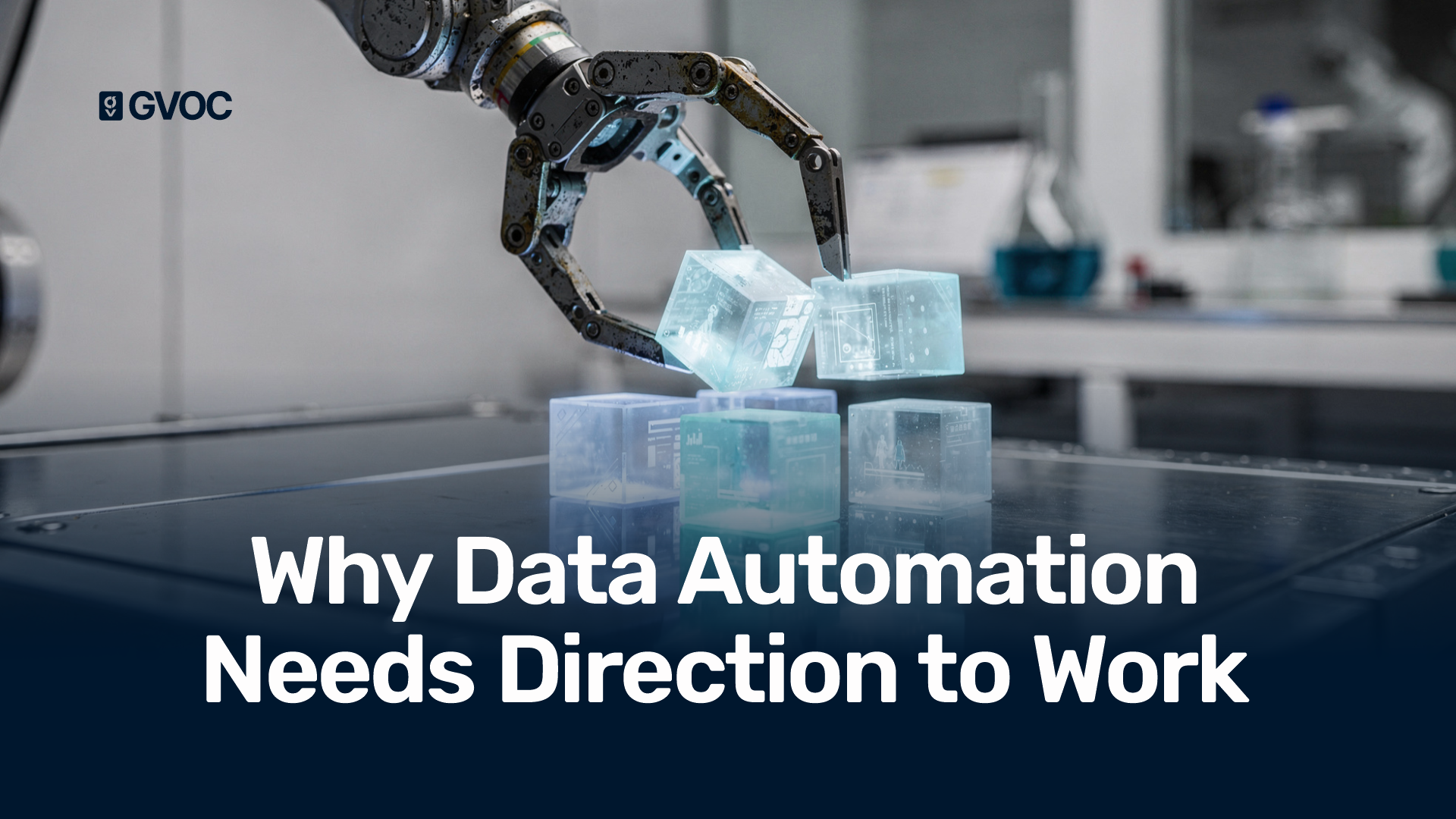Content
Explore the Latest Trends
In today's dynamic, fast-moving business world, organizations must deal with dual challenges: leveraging big amounts of data effectively while meeting demands and nuances of going digital, with technology changing faster than ever, moving to a data-driven culture is not only advantageous, but it has become a key prerequisite for long-term success and competitiveness.
However, most organizations are finding it quite challenging to think through an effective strategy by which full utilization of their data assets would be possible, it is in this context that GVOC comes as a beaming ray of hope and a maverick of innovation to lead them through the complex and often overwhelming landscape.
With GVOC uniquely positioned to offer a wide range of full-service digital marketing services, the company is well-equipped to help organizations build and implement data-driven growth strategies that set them apart in a crowded marketplace.
Keenly aware of the challenges businesses face, GVOC is undeterred in its commitment to empowering clients not only to adapt to this change but to thrive within it-long-term growth and success assured in today's digital era.
the Latest Trends in Data-Driven Culture
AI and Machine Learning: These advanced technologies are fundamentally transforming the way organizations analyze and interpret data, and businesses can uncover valuable insights that were previously hidden in vast amounts of information, allowing them to make informed decisions based on data-driven evidence.
Moreover, AI enables the automation of decision-making processes, streamlining operations and enhancing efficiency, companies optimize their strategies for better outcomes, ultimately leading to increased competitiveness and growth in their respective industries.
Real-Time Analytics: The demand for real-time data access is experiencing significant growth in today's fast-paced business environment, organizations that effectively utilize real-time analytics are empowered to respond with remarkable speed and agility to shifting market conditions and evolving customer needs, these organizations can gain immediate insights that allow them to make informed decisions, optimize their operations, and enhance their overall performance. This capability enables them to anticipate trends and adapt their strategies proactively, ensuring they meet customer expectations and capitalize on emerging opportunities as they arise. In essence, the ability to access and analyze data in real-time has become a critical factor in achieving success and sustainability in the modern marketplace.
Integration of Multiple Data Sources: Companies are increasingly integrating various data sources, including social media, customer relationship management systems, and e-commerce platforms, to gain a holistic view of their performance.
Data Privacy and Security: With the growing importance of data comes the responsibility to protect it. Organizations are investing in robust security measures to ensure compliance with regulations while building customer trust.

Critical Insights & Strategy for a Data-Driven Culture
Cultivate a Data-First Mindset: Leadership must promote the importance of data at all levels of the organization. This involves training employees to use data in their daily decision-making processes.
Invest in Technology and Tools: Implementing advanced data analytics tools and platforms is crucial. GVOC’s services, such as conversion rate optimization, PPC advertising, SEO, and integrated digital communications, leverage advanced analytics to drive ROI and enhance customer engagement.
Encourage Collaboration Across Departments: Breaking down data silos is essential for fostering a data-driven culture. Cross-departmental collaboration can lead to better insights and more effective strategies.
Measure and Adapt: Continuous monitoring and evaluation of data-driven initiatives are critical. Organizations should establish key performance indicators (KPIs) to measure success and be willing to adapt their strategies based on what the data reveals.
Implementing Knowledge on Data-Driven Culture
To effectively harness the power of data, organizations must first develop a clear strategy that outlines specific goals, key initiatives, and expected outcomes related to data utilization, this strategic framework serves as a roadmap for aligning data efforts with business objectives.
Alongside this, training and development programs are essential to equip employees with the necessary skills to analyze and interpret data effectively, fostering a culture of data-centric decision-making, organizations should also consider utilizing comprehensive digital marketing services by partnering with experts like GVOC, which offers services such as social media management, marketing automation, and digital mixed modeling to enhance data-driven growth.
Transitioning to a data-driven culture is not without its challenges, but the benefits far outweigh the obstacles. GVOC’s comprehensive digital marketing services provide the tools and expertise needed to navigate this transition successfully.
For more details on how to enhance your organization's data-driven strategies, visit GVOC’s services page
Author
Ibtissam Belkoutbi
Research Writer/Business Journalist
Author
Case Studies & Strategies
Dive into our newsletter for a wealth of knowledge in digital marketing









.png)
.png)
.png)

.svg)



.png)
.png)
.svg)

.svg)
.jpg)

.jpg)
.jpg)
.jpg)






